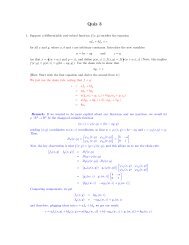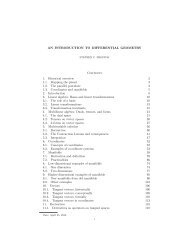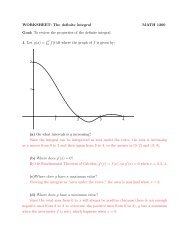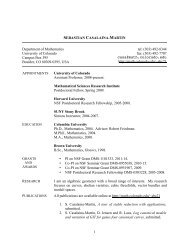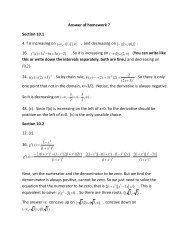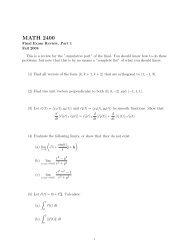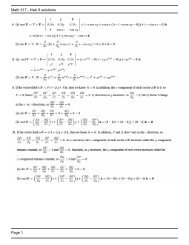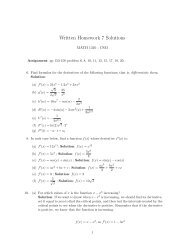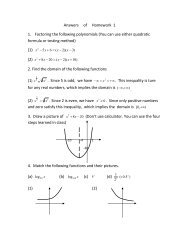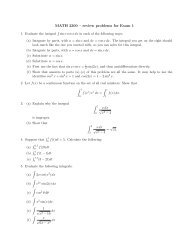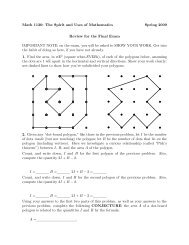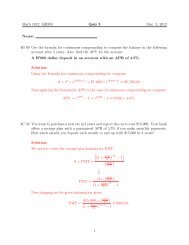HW 5 solutions
HW 5 solutions
HW 5 solutions
Create successful ePaper yourself
Turn your PDF publications into a flip-book with our unique Google optimized e-Paper software.
§2.4 pp. 156-157<br />
2. Find the general solution of the equation<br />
Solution In the homogeneous equation<br />
y ′′ − 4y ′ + 4y = te 2t .<br />
y ′′ − 4y ′ + 4y = 0<br />
we have b 2 − 4ac = (−4) 2 − 4(1)(4) = 0 so the characteristic equation has the double root<br />
r = −b/(2a) = 4/2 = 2.<br />
Then the general solution to the homogeneous equation is c1y1 + c2y2 where we have<br />
and<br />
y1 = e 2t<br />
y2 = te 2t .<br />
By the variation of parameters method, there is a particular solution of the form<br />
ψ = u1y1 + u2y2<br />
Since there formulas for u1 and u2 involve the Wronskian, we compute<br />
W [y1, y2] = e 2t (e 2t + 2te 2t ) − 2e 2t (te 2t ) = e 4t<br />
Now we apply the formulas for u1 and u2 to get<br />
and also<br />
Then we have the particular solution<br />
<br />
−gy2<br />
W dt<br />
2t 2t −(te )te<br />
=<br />
e4t dt<br />
<br />
= −t 2 dt<br />
u1 =<br />
= −t 3 /3<br />
<br />
gy1<br />
W dt<br />
2t 2t (te )e<br />
=<br />
e4t dt<br />
<br />
= t dt<br />
u2 =<br />
= t 2 /2<br />
ψ = −t 3 /3 e 2t + t 2 /2 te 2t = 1<br />
6 t3 e 2t<br />
so the general solution to the nonhomogeneous equation is<br />
y(x) = 1<br />
6 t3 e 2t + c1e 2t + c2te 2t .




